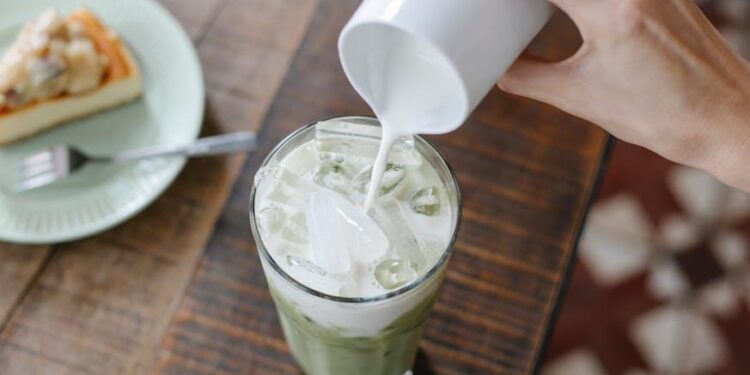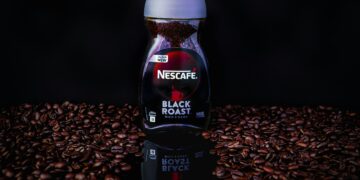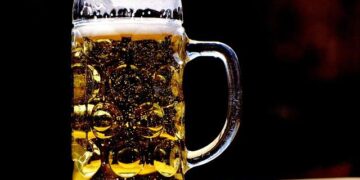Table of Contents
For years, I was what you might call a Dew devotee.
Through late-night study sessions in college and into my early career in marketing, that electric green bottle was a constant companion.
It wasn’t just a drink; it was a ritual, a tool, a fascination.
But my professional struggle began when I tried to explain this fascination to others.
I once stood in a boardroom, armed with charts on market share and target demographics, trying to dissect the “Mountain Dew phenomenon” for a client.
My presentation, built on conventional marketing frameworks, fell completely flat.
It was technically correct but emotionally hollow.
It listed facts but failed to capture the why—the visceral, almost magnetic pull this specific brand has on its loyalists.
That failure was a turning point.
It sent me on a quest to understand not just the product, but the entire system surrounding it.
The epiphany didn’t come from a marketing textbook.
It came from the world of systems thinking.
I realized Mountain Dew couldn’t be understood as a mere beverage.
It had to be analyzed as a “Bio-Cultural Operating System”—a complex, interconnected network of code, interface, and effects.
This framework allowed me to see the whole picture:
- The Core Code: The product’s synergistic chemical formulation, engineered for a specific physiological response.
- The User Interface: The brand’s marketing and cultural positioning, designed to give that physiological response a psychological meaning.
- The System Effects: The cumulative impact of running this “program” on the human body over time.
- Patches & Exploits: The ongoing battles between consumer advocates, regulators, and the manufacturer to modify the system’s code and control its effects.
This report is the result of that journey.
It is a deep dive into each component of this operating system, an attempt to decompile the code of a cultural icon and reveal how a simple soda became so much more.
Part I: The Core Code – Engineering the Craving
At the heart of any operating system is its code—the fundamental instructions that dictate its function.
For Mountain Dew, this code is not written in binary but in a precise chemical formula.
Its ingredients are not a random collection of flavors and preservatives; they are a synergistic system engineered for maximum physiological and sensory impact.
This is the backend programming that drives the entire user experience.
The Caffeine Engine
The primary function of the Dew “OS” is stimulation, and its engine is caffeine.
A standard 12 oz can of Mountain Dew contains 54-55 mg of caffeine.1
This positions it in a unique and highly strategic niche.
It contains significantly more caffeine than its main cola competitors, Coca-Cola Classic (34 mg) and Pepsi (38 mg), but less than a full-fledged energy drink like Red Bull (80 mg in a smaller 8.4 oz can) or a standard cup of coffee (95 mg or more in 8 oz).2
This “super-soda” status makes it a more potent daily stimulant than a regular soft drink without the intensity—or social stigma—of an energy drink.
This deliberate positioning is even clearer when examining the entire product ecosystem.
PepsiCo has engineered a tiered system of caffeination to capture a wide spectrum of consumer needs.
Mountain Dew Zero Sugar, for example, contains more caffeine than the original, with about 68 mg per 12 oz, appealing to those who want the kick without the calories.2
From there, the intensity escalates through a series of brand extensions:
- Mountain Dew Kickstart blends soda with fruit juice and contains approximately 69 mg of caffeine per 12 oz.5
- Mountain Dew Amp, one of the brand’s original forays into the energy drink space, contains around 107 mg per 12 oz.5
- Mountain Dew Energy (formerly Rise Energy) pushes into the high-performance category with 135 mg per 12 oz (180 mg in a 16 oz can).5
This strategy allows the brand to serve as both an entry point to caffeinated beverages for younger consumers and a ladder to higher-stimulant products as their tolerance or needs increase.
The following table provides a comprehensive comparison of caffeine content across the Mountain Dew family and other popular beverages, standardizing values to a 12 oz serving for clarity.
| Product Name | Serving Size (oz) | Caffeine (mg) | Caffeine per oz (mg/oz) |
| Mountain Dew (Original) | 12 | 54 | 4.5 |
| Diet Mountain Dew | 12 | 54 | 4.5 |
| Mountain Dew Zero Sugar | 12 | 68 | 5.7 |
| Mountain Dew Code Red | 12 | 54 | 4.5 |
| Mountain Dew Voltage | 12 | 55 | 4.6 |
| Mountain Dew Live Wire | 12 | 54 | 4.5 |
| Mountain Dew Baja Blast | 12 | 69 | 5.8 |
| Mountain Dew Game Fuel | 16 | 90 | 5.6 |
| Mountain Dew Kickstart | 16 | 92 | 5.8 |
| Mountain Dew Amp | 16 | 142 | 8.9 |
| Mountain Dew Energy (Rise) | 16 | 180 | 11.3 |
| Caffeine-Free Diet Mtn Dew | 12 | 0 | 0.0 |
| Coca-Cola Classic | 12 | 34 | 2.8 |
| Pepsi | 12 | 38 | 3.2 |
| Dr Pepper | 12 | 41 | 3.4 |
| Red Bull | 8.4 | 80 | 9.5 |
| Monster Energy | 16 | 160 | 10.0 |
| Brewed Coffee | 8 | 96 | 12.0 |
| Espresso | 1 | 63 | 63.0 |
Note: Caffeine content for Mountain Dew flavors can vary.
This table represents the most commonly cited values from sources.1
The Sugar and Acid Payload
The caffeine engine is fueled by a potent combination of sugar and acid.
A 12 oz can of original Mountain Dew contains 46 grams of sugar, delivered primarily as High-Fructose Corn Syrup (HFCS).1
This is substantially more than the 39 grams found in a can of Coca-Cola.7
This immense sugar payload serves two critical functions in the system’s code.
First, it effectively masks the natural bitterness of the high caffeine concentration, making the potent formula hyper-palatable.
Second, it delivers a rapid glycemic spike, a caloric rush that the body perceives as instant energy.
This physiological jolt works in concert with the psychoactive stimulation of the caffeine, creating a powerful one-two punch that users come to associate with the brand’s promise of energy.
Complementing the sugar is a high level of acidity.
With a pH of approximately 3.3, Mountain Dew is a highly acidic beverage, driven by its use of citric acid.6
This acidity is responsible for the signature “bite” or sharpness of the drink’s flavor profile.
It cuts through the intense sweetness of the 46 grams of sugar, preventing the drink from becoming cloying and instead making it seem crisp and refreshing.
This sensory intensity is a key part of the product’s appeal, distinguishing it from the smoother flavor of colas.
The result of this formulation is a masterclass in chemical synergy.
The high caffeine content provides the core psychoactive lift.
The massive sugar load provides both a mask for the caffeine’s bitterness and a simultaneous caloric jolt.
The citric acid provides the signature flavor and a sensory “bite” that makes the experience more intense and memorable.
Together, these components create a physiological and sensory experience far more potent than the sum of its parts—a core code perfectly optimized to create a craving.
Part II: The User Interface – Marketing the Rush
If the chemical formulation is Mountain Dew’s core code, its marketing is the user interface—the system of images, messages, and cultural associations that translates the product’s physiological rush into a powerful psychological identity.
For decades, PepsiCo has masterfully built this interface, transforming a simple drink into an elixir for a specific mindset, turning consumers into loyalists who don’t just drink the product, but identify with it.
From Moonshine Mixer to Youth Elixir
The brand’s counter-culture identity is not a modern marketing invention; it is embedded in its D.A. The original formula was invented in the 1940s by Tennessee bottlers Barney and Ally Hartman, not as a mainstream soda, but as a personal mixer for whiskey.8
The name “Mountain Dew” was, at the time, a well-known slang term for moonshine, or homemade whiskey.10
This origin story imbued the brand with an authentic “outlaw” ethos from its very inception, a narrative of defiance and Appalachian tradition that would prove invaluable decades later.9
For its first two decades, it remained a regional novelty.
The pivotal moment came in 1964, when the Pepsi-Cola company acquired the brand.9
Recognizing its potential, PepsiCo began a strategic pivot in the late 1960s and early 1970s, shifting the brand’s focus away from its hillbilly origins and toward a “younger, outdoorsy” generation.10
This was the first step in building the modern user interface, transforming Mountain Dew from a mixer for adults into a standalone beverage for youth.
The Psychology of “Do the Dew”
The brand’s identity solidified in the 1990s and 2000s with the iconic “Do the Dew” campaign.12
This marketing strategy was a stroke of genius, as it stopped selling a drink and started selling an attitude.
The campaigns were laser-focused on the burgeoning worlds of youth culture: extreme sports like skateboarding, snowboarding, and BMX, and later, the massive and influential community of video gamers.13
By sponsoring events like the X Games and creating its own competitions like the Dew Tour, the brand didn’t just advertise to its target audience; it became an integral part of their culture.16
The effectiveness of this strategy lies in its deep understanding of adolescent psychology.
It taps directly into the core drivers of that developmental stage:
- Sensation-Seeking: Adolescence is characterized by a heightened desire for novel and intense experiences.18 The marketing, filled with images of athletes performing daring, high-adrenaline stunts, provides a powerful vicarious thrill. This psychological appeal is perfectly matched by the product’s physiological effect—the tangible “rush” from the caffeine and sugar provides a sensory validation of the brand’s extreme image.
- Identity Formation: A key task of adolescence is the formation of an identity separate from parents and mainstream society.20 By leveraging its “outlaw” heritage and aligning itself with counter-cultural activities like skateboarding and gaming, Mountain Dew offers a ready-made identity badge. To “Do the Dew” is to signal that you are adventurous, anti-establishment, and part of a tribe that values excitement over conformity.
- Social Belonging: Sponsoring events and creating platforms like the Mtn Dew Gaming Rewards Program fosters a powerful sense of community.13 The brand becomes the common thread that connects like-minded individuals, turning solitary consumption into a shared cultural experience.
Ultimately, Mountain Dew’s marketing brilliance lies in selling a permissible form of transgression.
The core psychological drive of a teenager is to test boundaries and take risks, but actual extreme sports or other forms of rebellion carry real consequences.
Mountain Dew offers a safe, accessible, and parent-tolerated way to experience that feeling.
Drinking a can of Dew provides a physical jolt that mimics an adrenaline rush and aligns the consumer with a rebellious identity, all without any actual danger.
It is a packaged, commodified, and perfectly monetized form of the adolescent mindset.
This is the genius of the “User Interface”—it flawlessly connects the psychological needs of its target demographic with the physiological effects of its “Core Code.”
Part III: System Effects – The Human Hardware Response
Every operating system, no matter how brilliantly designed, produces effects on the hardware it runs on.
When the Mountain Dew “OS”—with its potent code and seductive interface—is run consistently on the human body, the long-term consequences can be severe.
These “system effects,” particularly in vulnerable populations, reveal the dark side of the product’s success, manifesting as debilitating dental problems and a significant metabolic toll.
The Dental Toll: A Deep Dive into “Mountain Dew Mouth”
In the field of public health, particularly in the Appalachian region of the United States, the term “Mountain Dew Mouth” has become a grim shorthand for a specific pattern of severe and rampant tooth decay.21
The phenomenon is the direct result of the product’s chemical composition creating a perfect storm for dental destruction.
The high sugar content (46g per 12oz) provides an abundant food source for acid-producing bacteria in the mouth, while the high concentration of citric acid (pH 3.3) directly erodes the protective outer layer of the teeth, the enamel.6
The data on this issue is stark, but the human stories are devastating.
Dentists working in the region describe the crisis in harrowing terms.
Dr. Edwin Smith, who operated a mobile dental truck in Kentucky for 12 years, has witnessed the extremes of Mountain Dew Mouth, including “toddlers with baby teeth filled with cavities, kids who won’t brush their teeth because of inflamed gums, and teenagers who have pulled out their own rotting teeth with pliers”.24
These are not isolated incidents.
In a video report, 11-year-old Anthony is shown being unable to brush his teeth for weeks because of the pain, while a high school junior named Casey has to have several of his adult teeth extracted due to his heavy consumption.25
The problem is exacerbated by a convergence of socio-economic factors.
In areas like Appalachia, high rates of poverty, limited access to affordable dental care, and a lack of fluoridated municipal water create an environment where the damage from the soda is amplified.24
The drink is cheap, ubiquitous, and culturally normalized to the point that dentists report seeing families put Mountain Dew in baby bottles.25
A detailed case report of a 25-year-old man who developed severe dental erosion after a seven-year habit of drinking 1.5 liters of cola per day illustrates the clinical progression of this damage, where the habit of holding the drink in his mouth directly correlated with the pattern of enamel destruction.29
The Metabolic Footprint and The HFCS Debate
Beyond the teeth, the “system effects” of heavy Mountain Dew consumption extend to the entire body.
A vast body of scientific research has linked the frequent intake of sugar-sweetened beverages (SSBs) to a cascade of chronic health problems, including weight gain, obesity, type 2 diabetes, cardiovascular disease, and non-alcoholic fatty liver disease.30
With its 46 grams of sugar per 12 oz can, Mountain Dew is a significant contributor to this public health issue.
A specific point of concern has been the drink’s primary sweetener, High-Fructose Corn Syrup (HFCS).6
While the food industry maintains that its metabolic effects are largely indistinguishable from regular sucrose (table sugar), some research suggests otherwise.34
Studies have linked high HFCS consumption to increased fat production in the liver, decreased insulin sensitivity, and a higher prevalence of type 2 diabetes in countries where HFCS is widely used in the food supply.36
Consumer concern over HFCS became so significant that in 2009, PepsiCo released “Mountain Dew Throwback,” a limited-edition version made with real sugar, as a direct response to this market sentiment.10
“Mountain Dew Mouth” is therefore more than just a dental issue; it is a powerful and tragic symptom of a systemic failure.
It represents the point of intersection where a perfectly engineered product, optimized for craving and habituation, is deployed via a psychologically potent marketing strategy into a socio-economically vulnerable population.
The devastating health outcomes are not an unforeseen bug, but rather the logical result of the system operating exactly as it was designed.
The product’s most severe “system effects” are disproportionately borne by those with the fewest resources to mitigate them.
Part IV: Patches and Exploits – The Battle for Control
The Mountain Dew “operating system” does not exist in a vacuum.
It is in a constant state of interaction with its environment, which includes consumers, advocates, and government regulators.
This dynamic has led to a continuous battle for control, with external forces attempting to apply “patches” to fix perceived flaws in the system, while the system’s owner often leverages regulatory “exploits” to resist change and maintain the status quo.
The BVO Saga: A Case Study in Consumer Power
One of the most compelling examples of a successful “patch” is the story of Brominated Vegetable Oil (BVO).
For decades, Mountain Dew and other citrus-flavored sodas contained BVO, an emulsifier that keeps the citrus oils suspended in the water, giving the drink its characteristic cloudy appearance.9
However, BVO has a controversial history: it was also patented as a flame retardant, and health concerns linked it to bromine accumulation in body fat and potential thyroid problems.41
The ingredient has been banned in food products in Europe and Japan for years.40
Despite its questionable safety profile, BVO remained in many American beverages.
The tipping point came not from regulators, but from a grassroots consumer campaign.
In 2013, a Mississippi teenager named Sarah Kavanagh started a Change.org petition demanding that PepsiCo remove BVO from its Gatorade sports drink.43
The petition went viral, gathering over 200,000 signatures and creating a public relations crisis for the beverage giant.41
The pressure worked.
In January 2013, PepsiCo announced it would remove BVO from Gatorade, and in May 2014, both PepsiCo and Coca-Cola pledged to remove the ingredient from all their beverages, including Mountain Dew.40
The story arc concluded years later with official regulatory action.
Spurred by this consumer-driven industry shift and further scientific study, California passed a law in 2023 banning BVO, and the FDA followed with a proposed nationwide ban, which was finalized in July 2024.40
The BVO saga is a clear case study in how public outcry can force an industry to “patch” its own code, with regulators eventually codifying the change into law.
The Regulatory Maze: Caffeine, Labeling, and Lobbying
In contrast to the BVO success story, the regulation of caffeine in soft drinks demonstrates how the system can be “exploited” to resist change.
The FDA’s primary regulation on caffeine in soda is a historical artifact.
It stems from a 1911 lawsuit against Coca-Cola and was later codified in the 1958 Food Additives Amendment.47
This rule classifies caffeine as “Generally Recognized as Safe” (GRAS) for use in “cola-type beverages” at a level not to exceed 0.02%, which translates to about 71 mg per 12 oz serving.49
This decades-old rule, however, is narrowly defined.
It created a regulatory gray area that the beverage industry has skillfully navigated.
By creating new categories of drinks that are not “cola-type beverages”—such as citrus sodas and, most notably, energy drinks—manufacturers have been able to add caffeine far in excess of the 71 mg limit.
Some companies have gone a step further, classifying their highly caffeinated products as “dietary supplements,” which fall under a different and less stringent set of regulations that have no specific limit on caffeine content.51
Attempts to modernize these rules and increase transparency have been met with significant resistance.
For example, when Senator Dick Durbin introduced legislation to extend nutrition labeling requirements to all caffeinated beverages, it was met with a strong lobbying effort from beverage companies and trade groups like PepsiCo and the Natural Products Association.51
The bill was ultimately defeated.51
As a result, the FDA still does not require manufacturers to list the exact amount of caffeine on a beverage’s nutrition label, though many now do so voluntarily due to consumer pressure.53
The regulatory history of Mountain Dew’s key ingredients reveals a fundamental tension in the American food system.
Change is often reactive, not proactive.
For BVO, it took a viral consumer petition to force an industry to abandon an ingredient that had been banned elsewhere for decades.
For caffeine, the regulatory framework has been outpaced by industry innovation and effectively stalled by lobbying, leaving consumers to navigate a marketplace of escalating stimulant levels with inconsistent information.
This pattern suggests that the regulatory “operating system” itself has vulnerabilities that are consistently exploited, with “patches” being applied only after significant public pressure demonstrates that a flaw has become untenable.
Conclusion: Decompiling the Dew
The journey to understand Mountain Dew, which began with a failed marketing presentation, concludes with a far deeper appreciation for the intricate forces that shape our food environment.
The “Bio-Cultural Operating System” framework proved to be the key, allowing for a holistic analysis that conventional methods missed.
By decompiling this system, we can see the full picture of how a neon green soda became a cultural and biological force.
The Core Code—a synergistic combination of caffeine, sugar, and acid—was engineered not just for taste, but for a potent and memorable physiological effect.
This powerful backend programming laid the foundation for everything that followed.
The User Interface—a masterfully executed marketing strategy centered on extreme sports, gaming, and youth rebellion—gave that physiological rush a powerful psychological meaning.
It translated a chemical reaction into a cultural identity, creating a bond with its audience that transcends mere consumer preference.
The System Effects, tragically, are the documented consequences of running this powerful program on the human body.
The epidemic of “Mountain Dew Mouth” and the contribution to metabolic diseases are not bugs in the system, but rather the inevitable outcomes of its core design, felt most acutely by the most vulnerable populations.
Finally, the history of Patches and Exploits reveals the ongoing struggle to control the system.
The consumer-driven removal of BVO shows that the code can be changed from the outside, while the persistent regulatory loopholes around caffeine demonstrate the system’s powerful resistance to reform.
In the end, this analysis is about more than just one soda.
Mountain Dew serves as a compelling case study for the modern food landscape—a world of brilliant chemical engineering and psychologically resonant branding that operates within a complex and often lagging regulatory framework.
The ultimate lesson is the critical need for consumers, advocates, and regulators alike to develop a “systems-level literacy.” We must learn to see not just the products on the shelf, but the entire operating system behind them, if we are to navigate the powerful forces shaping our choices, our culture, and our health.
Works cited
- How Much Caffeine Is In Mountain Dew? [Answered] – CAFELY, accessed August 7, 2025, https://cafely.com/blogs/info/caffeine-in-mountain-dew
- How Much Caffeine is in Mountain Dew Major Melon? 2025 Breakdown, accessed August 7, 2025, https://cornercoffeestore.com/how-much-caffeine-in-mountain-dew-major-melon/
- How Much Caffeine is in Mountain Dew? 2025 Breakdown | Corner Coffee Store, accessed August 7, 2025, https://cornercoffeestore.com/how-much-caffeine-is-in-mountain-dew/
- Coffee, Tea, Soft Drinks — Caffeine Content – Utah Math Department, accessed August 7, 2025, https://www.math.utah.edu/~yplee/fun/caffeine.html
- What kind of Mountain Dew has the highest amount of caffeine? : r/mountaindew – Reddit, accessed August 7, 2025, https://www.reddit.com/r/mountaindew/comments/19157oj/what_kind_of_mountain_dew_has_the_highest_amount/
- Mountain Dew | Tooth Decay | Learn Why You Should Say “No” – Lincoln Family Dentistry, accessed August 7, 2025, https://lincolnfamilydentistry.com/tooth-decay-and-mountain-dew/
- Why Mountain Dew Is Worse for Your Teeth Than Coke, accessed August 7, 2025, https://damon-orthodontics.com/why-mountain-dew-is-worse-for-your-teeth-than-coke/
- en.wikipedia.org, accessed August 7, 2025, https://en.wikipedia.org/wiki/Mountain_Dew#:~:text=Mountain%20Dew%2C%20stylized%20as%20Mtn,by%20Bill%20Bridgforth%20in%201958.
- The Unknown History of Mountain Dew – History Oasis, accessed August 7, 2025, https://www.historyoasis.com/post/mountain-dew
- Mountain Dew – Wikipedia, accessed August 7, 2025, https://en.wikipedia.org/wiki/Mountain_Dew
- Backstories of PepsiCo Brands: The Surprisingly Fascinating History Behind Mountain Dew, Dr Pepper, and Gatorade – Fitzgerald Brothers Beverages, accessed August 7, 2025, https://www.fitzgeraldbros.com/news/backstories-behind-mnt-dew-dr-pepper-and-gatorade/
- History – Mountain Dew Addicts – Devoted to Dew News and Rumors, accessed August 7, 2025, https://www.brinksmarket.com/dew/history.htm
- A Deep Dive into the Marketing Strategies of Mountain Dew, accessed August 7, 2025, https://thebrandhopper.com/2024/10/26/a-deep-dive-into-the-marketing-strategies-of-mountain-dew/
- PepsiCo tests ‘high-energy’ Mountain Dew – Marketing Week, accessed August 7, 2025, https://www.marketingweek.com/pepsico-tests-high-energy-mountain-dew/
- Marketing Mix of Mountain Dew and 4Ps (Updated 2025) | Marketing91, accessed August 7, 2025, https://www.marketing91.com/marketing-mix-mountain-dew/
- The Marketing Strategies of Mountain Dew – A Case Study – Marketer.club, accessed August 7, 2025, https://www.marketer.club/p/the-marketing-strategies-of-mountain-dew
- Mountain Dews Marketing Strategy And Plan Marketing Essay | UKEssays.com, accessed August 7, 2025, https://www.ukessays.com/essays/marketing/mountain-dews-marketing-strategy-and-plan-marketing-essay.php
- Editorial: Understanding Extreme Sports: A Psychological …, accessed August 7, 2025, https://pmc.ncbi.nlm.nih.gov/articles/PMC7005245/
- (PDF) Advertising on the edge: appeal effectiveness when …, accessed August 7, 2025, https://www.researchgate.net/publication/335798596_Advertising_on_the_edge_appeal_effectiveness_when_advertising_in_extreme_sports
- Extreme Sports: Are They Worth The Risk? – Fisher Digital Publications, accessed August 7, 2025, https://fisherpub.sjf.edu/cgi/viewcontent.cgi?article=1008&context=journal3690
- What Is Mountain Dew Mouth? – Cleveland Clinic Health Essentials, accessed August 7, 2025, https://health.clevelandclinic.org/mountain-dew-mouth
- Soda and Your Teeth: How to Prevent the Dreaded Mountain Dew Mouth, accessed August 7, 2025, https://www.associateddentists.com/blog/soda-and-your-teeth-how-to-prevent-the-dreaded-mountain-dew-mouth/
- What Causes Mountain Dew Mouth? – Healthline, accessed August 7, 2025, https://www.healthline.com/health/dental-and-oral-health/mountain-dew-mouth
- The tragedy of “Mountain Dew mouth” and the U.S.’s insane approach to dental care, accessed August 7, 2025, https://www.salon.com/2017/06/20/the-tragedy-of-mountain-dew-mouth-and-the-u-s-s-insane-approach-to-dental-care_partner/
- Heroes of the hills l Hidden America: Children of the Mountains PART 4/6 – YouTube, accessed August 7, 2025, https://www.youtube.com/watch?v=dEcjmV6pjak
- Mountain Dew And Appalachian Teeth – Divine Dental, accessed August 7, 2025, https://divinedentallv.com/services-view/2161/
- Too Much of a Good Thing: The Dental Phenomenon of Mountain …, accessed August 7, 2025, https://chattanoogafamilydentaltn.com/blog/2024/02/21/too-much-of-a-good-thing-the-dental-phenomenon-of-mountain-dew-mouth/
- Mountain Dew Mouth – Mississippi Free Press, accessed August 7, 2025, https://www.mississippifreepress.org/mountain-dew-mouth/
- Dental erosion and severe tooth decay related to soft drinks: a case …, accessed August 7, 2025, https://pmc.ncbi.nlm.nih.gov/articles/PMC2676420/
- Get the Facts: Sugar-Sweetened Beverages and Consumption | Nutrition – CDC, accessed August 7, 2025, https://www.cdc.gov/nutrition/data-statistics/sugar-sweetened-beverages-intake.html
- Energy Drinks • The Nutrition Source, accessed August 7, 2025, https://nutritionsource.hsph.harvard.edu/energy-drinks/
- Fast Food & Sugary Drinks | UConn Rudd Center for Food Policy and Health, accessed August 7, 2025, https://uconnruddcenter.org/research/food-marketing/fastfood-sugarydrinks/
- What’s in This?: Mountain Dew – MEL Magazine, accessed August 7, 2025, https://melmagazine.com/en-us/story/mountain-dew-ingredients
- 4 things to know about cane sugar vs. high-fructose corn syrup as Coca-Cola switches – PBS, accessed August 7, 2025, https://www.pbs.org/newshour/health/is-cane-sugar-coca-cola-a-healthier-option-heres-what-experts-say
- REPORT 3 OF THE COUNCIL ON SCIENCE AND PUBLIC HEALTH (A-08) The Health Effects of High Fructose Syrup (Resolution 407, A-07) (Re – American Medical Association, accessed August 7, 2025, https://www.ama-assn.org/sites/ama-assn.org/files/corp/media-browser/public/about-ama/councils/Council%20Reports/council-on-science-public-health/a08-csaph-high-fructose-syrup.pdf
- What Makes High Fructose Corn Syrup So Bad? – Hartford Hospital, accessed August 7, 2025, https://hartfordhospital.org/about-hh/news-center/news-detail?articleid=27851&publicid=461
- Health implications of fructose consumption: A review of recent data – PubMed Central, accessed August 7, 2025, https://pmc.ncbi.nlm.nih.gov/articles/PMC2991323/
- High Fructose Corn Syrup and Diabetes Prevalence: A Global Perspective – ResearchGate, accessed August 7, 2025, https://www.researchgate.net/publication/233771558_High_Fructose_Corn_Syrup_and_Diabetes_Prevalence_A_Global_Perspective
- Research indicates risks of consuming high fructose corn syrup | University of Oxford, accessed August 7, 2025, https://www.ox.ac.uk/news/2012-11-28-research-indicates-risks-consuming-high-fructose-corn-syrup
- Brominated vegetable oil – Wikipedia, accessed August 7, 2025, https://en.wikipedia.org/wiki/Brominated_vegetable_oil
- Your Soda Probably Contains the Same Flame Retardant Chemical as Your Couch, accessed August 7, 2025, https://www.mcgowanhood.com/2017/01/19/soda-probably-contains-flame-retardant-chemical-couch/
- Brominated vegetable oil (bvo) | Center for Science in the Public Interest, accessed August 7, 2025, https://www.cspi.org/article/brominated-vegetable-oil-bvo
- Coke and Pepsi drop controversial ingredient BVO from all drinks – Brauwelt, accessed August 7, 2025, https://brauwelt.com/en/international-report/the-americas/623861-coke-and-pepsi-drop-controversial-ingredient-bvo-from-all-drinks
- Beware of the chemical BVO in fruit-flavored drinks – Environmental Working Group, accessed August 7, 2025, https://www.ewg.org/news-insights/news/2025/04/beware-chemical-bvo-fruit-flavored-drinks
- Watch for This Harmful Chemical in Your Soda | Environmental …, accessed August 7, 2025, https://www.ewg.org/news-insights/news/2021/01/watch-harmful-chemical-your-soda
- This Ingredient in Citrus-Flavored Sodas Faces US Ban: Here’s Why – Tech Times, accessed August 7, 2025, https://www.techtimes.com/articles/302471/20240311/ingredient-citrus-flavored-sodas-faces-ban-heres-why.htm
- Regulatory status of caffeine in the United States, accessed August 7, 2025, https://academic.oup.com/nutritionreviews/article-pdf/72/suppl_1/23/24104221/nutritionreviews72-0023.pdf
- How a Lawsuit Against Coca-Cola Convinced Americans to Love Caffeine – Time Magazine, accessed August 7, 2025, https://time.com/5405132/coca-cola-trial-caffeine-history/
- Caffeine’s Wake-Up Call: Navigating Legal Risks for Highly Caffeinated Beverage Products, accessed August 7, 2025, https://www.climatesolutionslaw.com/2024/01/caffeines-wake-up-call-navigating-legal-risks-for-highly-caffeinated-beverage-products/
- Regulatory status of caffeine in the United States – PubMed, accessed August 7, 2025, https://pubmed.ncbi.nlm.nih.gov/25293541/
- Caffeinated lobbying – Sunlight Foundation, accessed August 7, 2025, https://sunlightfoundation.com/2012/11/15/caffeinated-lobbying/
- Caffeine: The New “Energy” Crisis: The Dietary Supplement Health and Education Act of 1994 and Its Implications for – BrooklynWorks, accessed August 7, 2025, https://brooklynworks.brooklaw.edu/cgi/viewcontent.cgi?article=1257&context=blr
- How much caffeine is in coffee, tea, soda, and other foods?, accessed August 7, 2025, https://www.cspi.org/article/how-much-caffeine-coffee-tea-soda-and-other-foods
- Caffeine Content Labeling: A Missed Opportunity for Promoting Personal and Public Health, accessed August 7, 2025, https://pmc.ncbi.nlm.nih.gov/articles/PMC3777296/
- Caffeine in Sodas, accessed August 7, 2025, https://robslink.com/SAS/democd59/soda_caffeine.htm
- The Facts About Your Favorite Foods and Beverages (U.S.) | Caffeine, accessed August 7, 2025, https://www.pepsicoproductfacts.com/home/caffeine
- Caffeine Content of Energy Drinks and Other Beverages – iMOM, accessed August 7, 2025, https://www.imom.com/caffeine-content-of-energy-drinks-and-other-beverages/
- Caffeine content for coffee, tea, soda and more – Mayo Clinic, accessed August 7, 2025, https://www.mayoclinic.org/healthy-lifestyle/nutrition-and-healthy-eating/in-depth/caffeine/art-20049372
- How Much Caffeine Is in Mountain Dew Voltage? 2025 Breakdown …, accessed August 7, 2025, https://cornercoffeestore.com/how-much-caffeine-in-mountain-dew-voltage/
- Mountain Dew Sweet Lightning – 12 fl oz – PepsiCo Product Facts, accessed August 7, 2025, https://www.pepsicoproductfacts.com/Home/Product?formula=F0000008801&form=FTN&size=12






